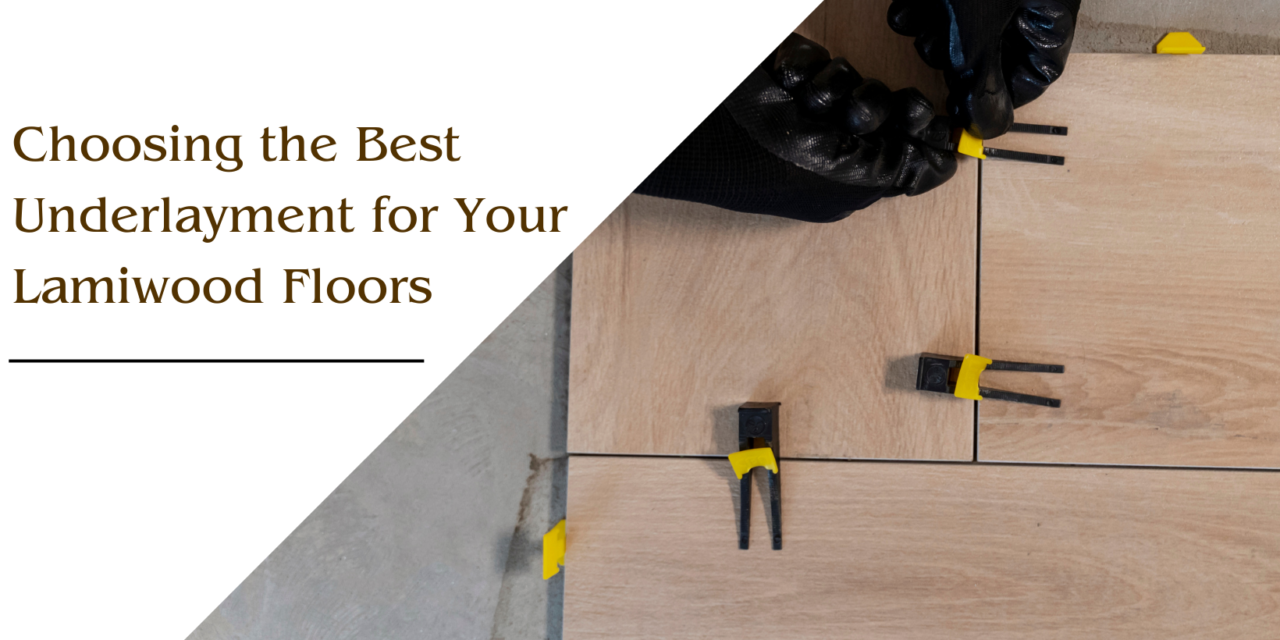Underlayment is a crucial component in the installation of lamiwood wooden flooring, acting as a foundation that brings out the best in terms of comfort, durability, and aesthetics. It plays a significant role in noise reduction, moisture protection, and providing a smoother surface for the lamiwood to lay on, enhancing the overall feel and longevity of your floors. Selecting the right underlayment can seem daunting, but understanding the different types and their benefits can help you make an informed decision tailored to your home’s needs. Here’s a comprehensive guide to choosing the best underlayment for your lamiwood floors.
Consider the Subfloor Type
The type of subfloor you have is the first consideration in choosing an underlayment. Concrete subfloors require a moisture barrier to prevent moisture from seeping up into the lamiwood, which could cause warping or mold growth. Plywood subfloors, on the other hand, do not typically require the same level of moisture protection but benefit from underlayment that provides stability and sound absorption.
Understand Underlayment Types
Standard Foam Underlayment: This is the most common type, offering basic cushioning and sound absorption qualities. It’s lightweight, easy to install, and suitable for many standard installations, particularly over plywood subfloors.
Combination Foam Underlayment: This underlayment comes with an attached moisture barrier, making it an ideal choice for concrete subfloors or basements. It simplifies installation by combining two steps into one and provides both cushioning and moisture protection.
Cork Underlayment: Cork is an eco-friendly option that provides excellent sound absorption and natural antimicrobial properties, which can help prevent mold and mildew. It’s a great choice for upper floors in multi-level homes or apartments where noise reduction is a priority.
Felt Underlayment: Heavier and denser than foam, felt underlayment offers superior sound dampening and is more durable. It’s often made from recycled fibers, appealing to those looking for sustainable options. Felt is suitable for use over both plywood and concrete subfloors when used with a separate moisture barrier.
Rubber Underlayment: Rubber offers the best sound insulation, making it ideal for high-traffic areas or multi-story buildings. It can be more expensive but is highly durable and resistant to moisture, mold, and mildew.
Consider Your Flooring Location and Needs
Where your lamiwood wooden flooring will be installed plays a significant role in your underlayment choice. For ground-level or basement installations on concrete, prioritize moisture resistance. For upper levels, focus on sound reduction. Also, consider the level of foot traffic and the need for comfort underfoot in areas like bedrooms and living spaces.
Compatibility with Your Lamiwood Flooring
Ensure the underlayment is compatible with your specific type of lamiwood flooring. Some manufacturers may recommend or even require specific underlayment types to maintain the warranty. Always check the flooring’s installation instructions for guidance.
Budget Considerations
Underlayment varies in price, with options to fit every budget. While it might be tempting to save money by choosing a less expensive underlayment, consider the long-term benefits of investing in a quality product that will offer better moisture protection, durability, and sound reduction.
Conclusion
Choosing the right underlayment for your lamiwood wood floors is essential for ensuring the longevity, comfort, and performance of your flooring investment. By considering the subfloor type, understanding the different underlayment options, and evaluating your specific needs, you can select an underlayment that enhances the beauty and functionality of your lamiwood floors. Remember, a little research and investment in the right underlayment can significantly impact the enjoyment and satisfaction you get from your new floors.





